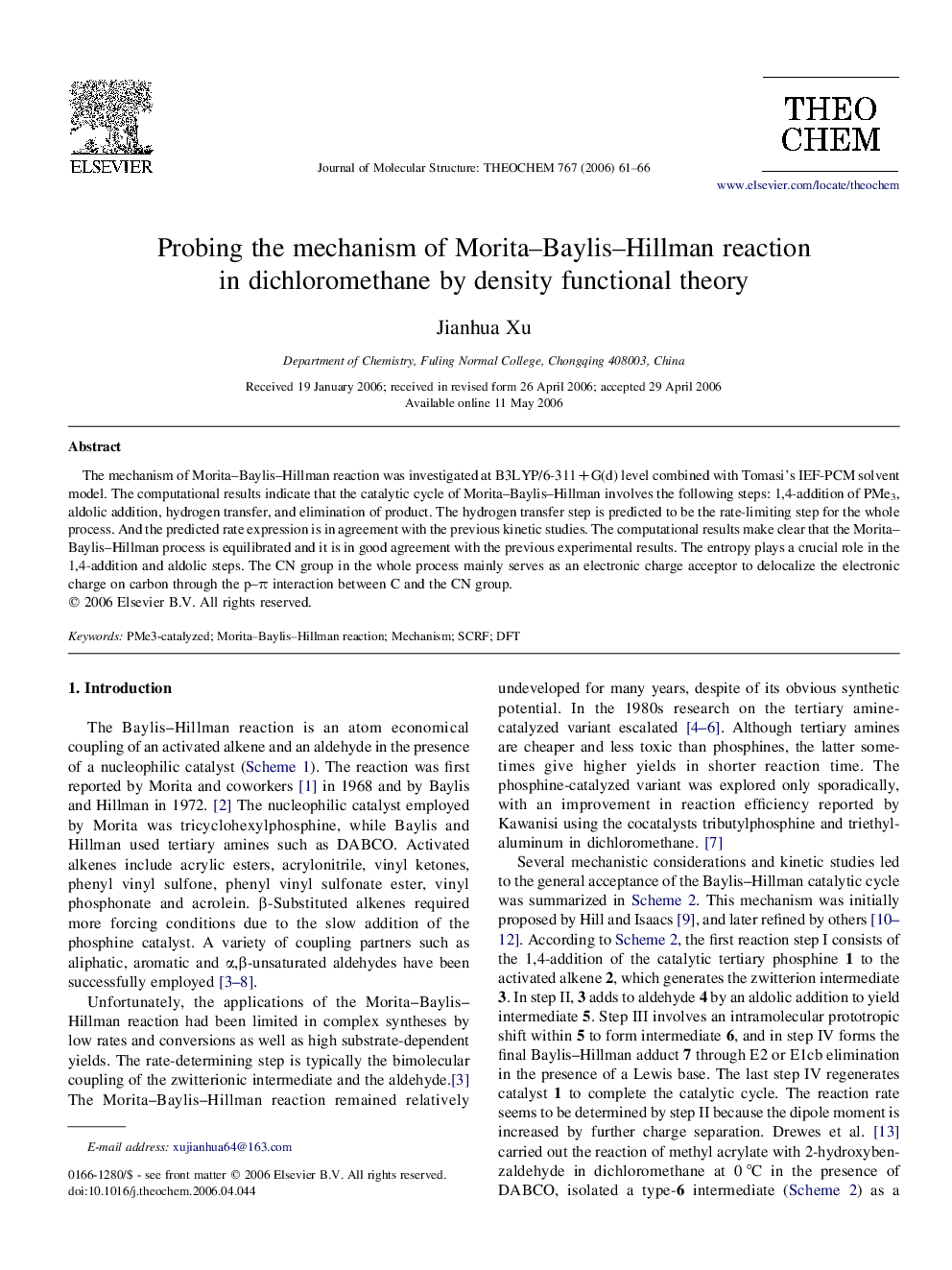| Article ID | Journal | Published Year | Pages | File Type |
|---|---|---|---|---|
| 5418424 | Journal of Molecular Structure: THEOCHEM | 2006 | 6 Pages |
Abstract
The mechanism of Morita-Baylis-Hillman reaction was investigated at B3LYP/6-311+G(d) level combined with Tomasi's IEF-PCM solvent model. The computational results indicate that the catalytic cycle of Morita-Baylis-Hillman involves the following steps: 1,4-addition of PMe3, aldolic addition, hydrogen transfer, and elimination of product. The hydrogen transfer step is predicted to be the rate-limiting step for the whole process. And the predicted rate expression is in agreement with the previous kinetic studies. The computational results make clear that the Morita-Baylis-Hillman process is equilibrated and it is in good agreement with the previous experimental results. The entropy plays a crucial role in the 1,4-addition and aldolic steps. The CN group in the whole process mainly serves as an electronic charge acceptor to delocalize the electronic charge on carbon through the p-Ï interaction between C and the CN group.
Related Topics
Physical Sciences and Engineering
Chemistry
Physical and Theoretical Chemistry
Authors
Jianhua Xu,
